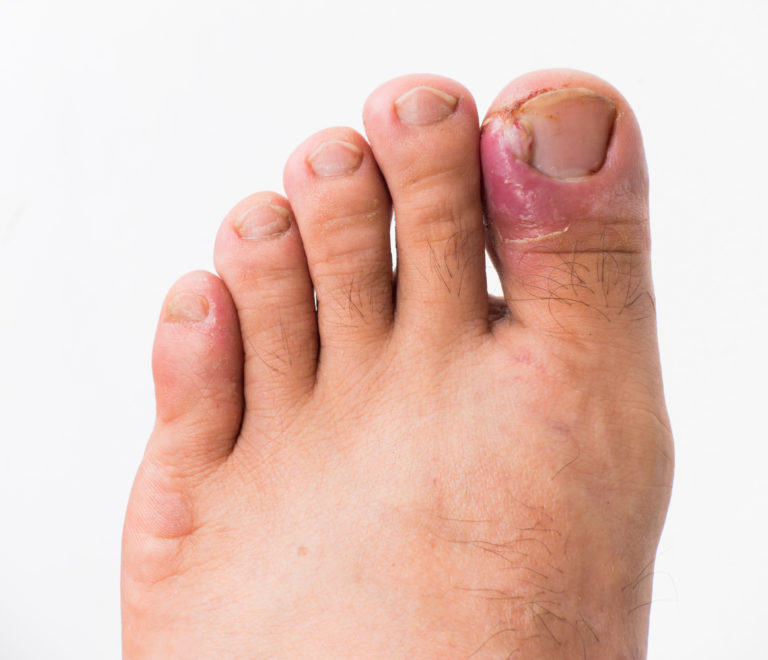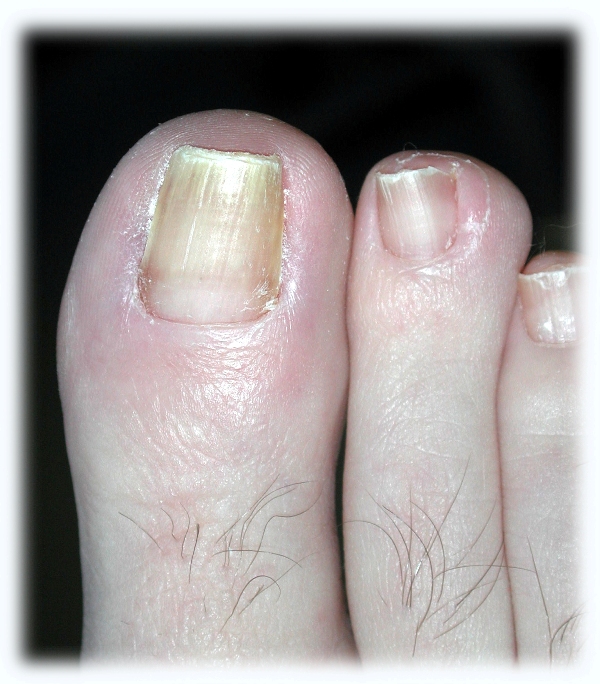 Ingrown toenails are a very common, yet very painful and frustrating, problem that we treat here at Masterton Foot Clinic. No one is immune – we treat ingrown toenails in everyone from toddlers to athletes to those in their golden years.
Ingrown toenails are a very common, yet very painful and frustrating, problem that we treat here at Masterton Foot Clinic. No one is immune – we treat ingrown toenails in everyone from toddlers to athletes to those in their golden years.
Ingrown toenail surgery is one of the multiple treatments we offer for ingrown toenails. It is by far our most popular treatment as it permanently corrects ingrown toenails for approximately 9 out of 10 of our patients.
To learn more about ingrown toenails and why they occur, click here.
Permanently correcting ingrown toenails with surgery
This minor surgical procedure is called a Partial Nail Avulsion (PNA). It is performed routinely in your regular treatment chair, under the care of our experienced podiatrists. The appointment is one hour long, with the procedure itself taking only 15 minutes. The rest of the appointment consists of preparing your foot beforehand and dressing your toe afterwards, adhering to extremely strict safety standards and infection-control protocols.
This procedure is very well tolerated by children and adults alike. It is performed under local anaesthetic so it is painless. We’ve put together a short video on the procedure being performed on a patient here at Masterton Foot Clinic – please view at your discretion as we have not censored any part of the procedure.
The procedure: Ingrown toenail treatment
During a PNA, we remove the bothersome nail edge and apply a chemical that stops the specific ‘problem’ part of the nail from growing back.
- We start by cleaning and disinfecting the site – not just the toe but the front half of your foot, to minimise the risk of any foreign particles from coming in contact with the toe during this procedure
- We then inject the toe with a local anaesthetic using a thin needle
- Once we confirm that your toe is numb, we carry out the procedure where we remove the small portion of the nail that is growing into the skin and causing you pain
- With your permission, we then apply a chemical called phenol to destroy some of the nail growing cells, so that edge of the nail does not continue to grow back and cause you pain
- We dress the toe to promote best healing
- We book you in for a dressing change and give you the low-down on how to best care for your toe in the meantime
Why we love the PNA surgery for painful ingrown toenails
This procedure is simple – you sit back with your phone, a book, or an iPad as a distraction for the kids, and your painless procedure is completed within an hour. No extra time off work or school is needed, though we do recommend taking it easy for the remainder of the day and putting your feet up.
You don’t need to wear any boots or braces after the procedure – we recommend going home in a jandal on the affected foot and not wearing shoes that may press on the toe inside the house. There is usually very little discomfort after the procedure, and any discomfort that does arise can be taken care of using appropriate painkillers.
After we apply a sterile dressing to your toe, we provide you with a take-home dressing pack and re-dressing instructions, and monitor your progress to ensure it is healing well.
How does a toe look after the PNA procedure?
While some people are concerned about the appearance of their toenail after a PNA procedure, you don’t need to worry. Once complete healing has occurred, your nail will only be marginally shorter, we try to remove as little of the nail as possible, and it will look like it has a very straight nail edge on the side that the procedure has been performed on.
Ingrown Toenail Surgery FAQ’s
Why do ingrown toenails start?
Ingrown toenails start because part of the nail pierces the skin surrounding it and grows into it. The reason for this can vary greatly, but for our clinic, the most common reasons include the way toenails are trimmed (especially when they’re bitten or ripped off) and from wearing tight shoes that squeeze the toes. Sometimes, it’s the shape of the toe or the nail that is a big contributing factor.
Can you use antibiotics for ingrown toenails?
Antibiotics help manage an infection, so when ingrown toenails become infected, antibiotics can be very useful. Antibiotics do not treat the actual ingrown nail, however. In order for that to happen, they would have to remove the sharp nail spicule that has pierced the skin – which they don’t, but they do work on the bacteria that is causing an infection.
If you get antibiotics for your infected ingrown nail, you will still need to have the nail treated.
What do ingrown toenails look like?
Ingrown toenails often look red and swollen on the side of the nail that has ingrown. Sometimes, both sides of the nail can be affected, and sometimes more than one toe can be affected. The swollen area will be sore or tender to touch. There may also be some bleeding from the side of the nail, or there may be some clear or yellow/white discharge, which may indicate an infection.
Are ingrown toenails dangerous?
We consider any situation where the skin has been pierced or broken to be dangerous because of the risk of infection. Given the location of the feet on the ground, where dirt and nasties may dwell, there is a higher risk of infection.
Ingrown toenails are also particularly dangerous to anyone with diabetes, diminished sensation in the feet, or problems with healing or circulation.
Will an ingrown toenail go away by itself?
No, not usually. Because ingrown toenails are defined as nails (parts of the nail) that have grown into the skin, as time goes on, the nail usually just keeps growing deeper. The offending nail edge just needs to be safely and carefully removed – and then the area of skin it has pierced can heal and the symptoms can settle. While some nail remains in the skin, the ingrown nail can’t go away or heal.
Can you help a baby with an ingrown toenail?
Yes, we always do our best to help everyone with ingrown nails. We often treat children, and occasionally babies, though this is much less common than in children of walking age (and very common in teenagers).
Does a V cut work for an ingrown toenail?
If you already have a painful ingrown toenail then cutting a V in the centre of the nail will not solve the problem – the problem is a piece of nail that has pierced the skin. Only removing the offending nail edge will work to fix an ingrown nail.
Does the toe swell when you have an ingrown toenail?
Yes it generally does, but for some this swelling can be very minor and mild, and for others, it can be full-blown, with the inflamed skin covering part of the nail.
Is ingrown toenail surgery painful?
Ingrown nail surgery is performed under local anaesthetic, which is applied before anything that has the potential to cause pain starts. We always check that the toe is fully numb before starting, so no, the surgery is not painful.
Is there another option aside from surgery to fix an ingrown toenail?
Yes, we also offer one-off ingrown nail removal. We refer to it this way because it simply treats the immediate problem without thinking about the long-term – whether the ingrown nail will just grow back. Surgery is preferred by many because it’s a permanent treatment, so no time, pain and money needs to be spent in the future treating it again.
If this is your very first ingrown toenail, and it’s unlikely to come back based on the cause, we may recommend our one-off treatment. Your podiatrist will discuss all of your options at your appointment.

